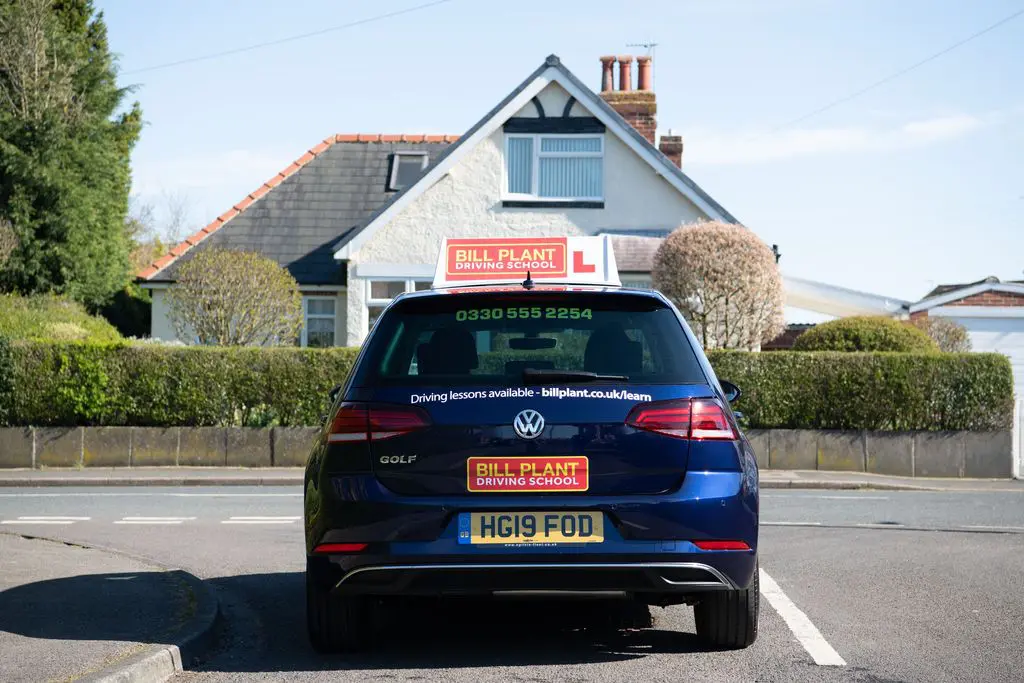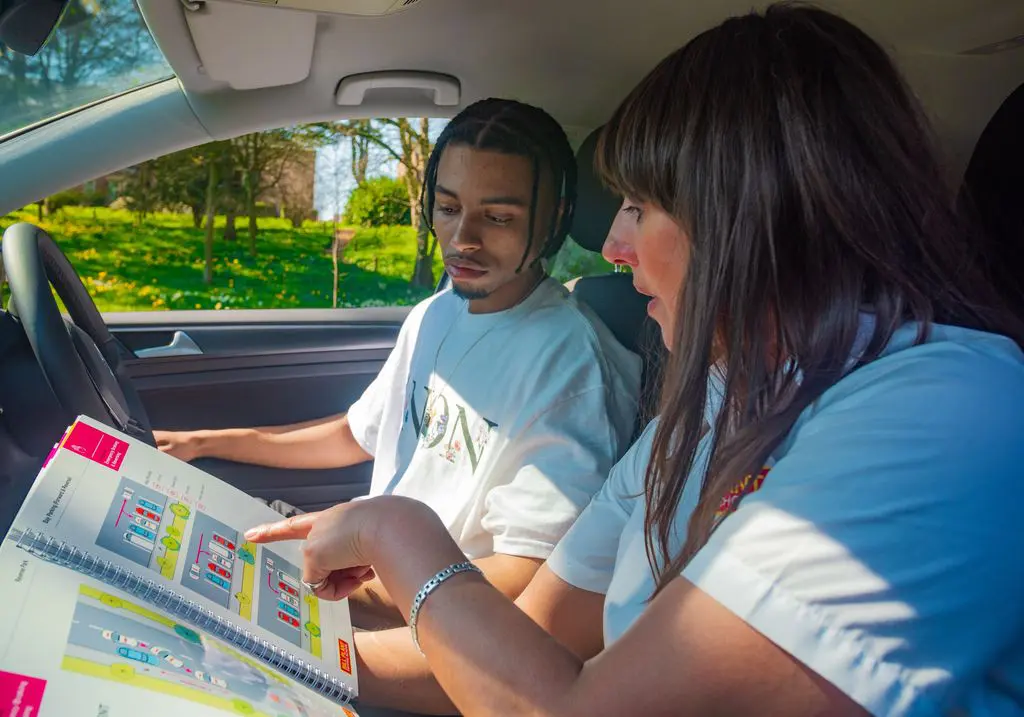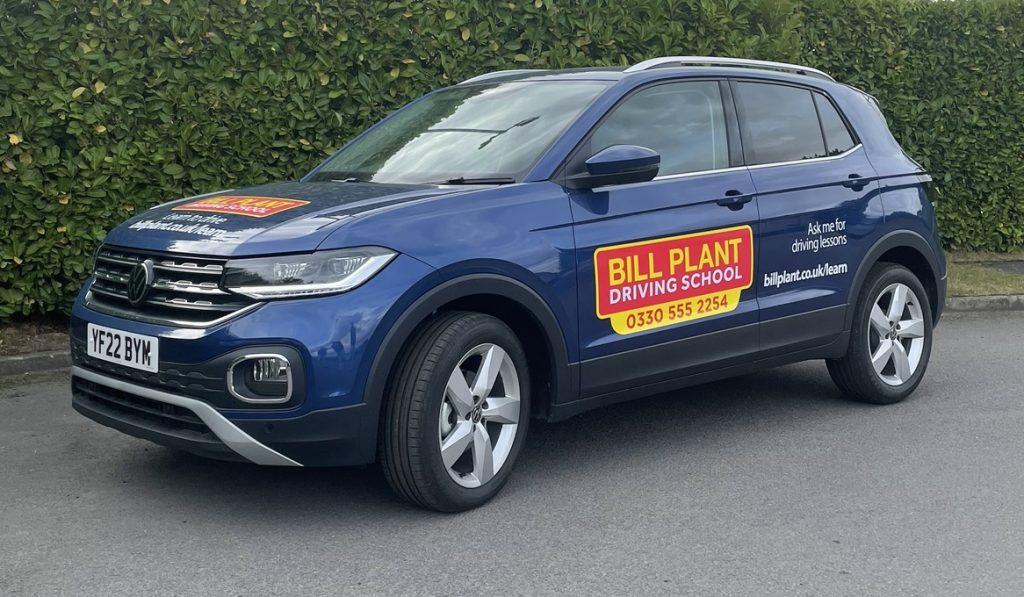
Sitting a driving test is nerve-wracking, and failing can feel even worse. Knowing you’ve failed might have an impact on your confidence as a driver and put you off sitting a test again.
However, you shouldn’t let a failure put you off trying again. The best way to make sure you pass is to practice as much as possible with driving lessons and try not to give up.
Our guide looks into some of the most common driving test fails and how you can avoid them in order to become a safer driver.
Types of driving test faults
The three main types of driving test faults are driver, serious, and dangerous. We have highlited what each of these mean below:
- Driver faults are the smallest of faults and are known as minor ones. While minor faults aren’t as severe, you will fail if you make 16 or more. It’s worth remembering that you can also fail if you make the same fault several times.
- Serious faults are potentially dangerous mistakes to yourself or other road users. Only one serious fault will cause you to fail your test.
- Dangerous faults are the most serious and, if you make one, it means you’ve endangered yourself or other road users. Your test may end after making a dangerous fault if your driving is dangerous to others.
Driver fault examples
There are several reasons why you might get a minor driving fault. These include:
- Stalling
- Hesitation
- Coasting
- Inappropriate gear use
- Poor clutch use
- Not signalling correctly
Serious fault examples
Below are some examples of serious faults made during a practical test:
- Not checking mirrors before turning
- Poor steering control
- Not making observations at junctions
- Moving off poorly
- Positioning at junctions
- Drivers disobeying traffic lights
Dangerous fault examples
Making a dangerous driving fault means you’ve put yourself and others at risk. Making one will result in an instant failure, and your examiner may have to intervene to prevent any accidents. Some examples of these include:
- Not checking blind spots before changing lanes, causing a vehicle to slow, swerve or stop
- Not checking mirrors before turning left to check for cyclists
- Mounting the pavement at any point
During the current COVID-19 measures if you make a dangerous driving fault you will be taken back to the test centre and your test will be over.
The most common driving test fails
By avoiding some of the most common reasons for failing, you can pass your test. Below are some of the top reasons for failing a driving test to help you understand which faults to avoid.
1. Junction observations
One of the biggest reasons students fail a driving test is by not making the proper observations when approaching and using junctions.
Some of the most common ‘Junctions – Observations’ faults include:
- Judging the speed of an approaching vehicle
- Entering a roundabout with poor observations
- Making no observations at all
- Poor dual carriageway observations when entering from a slip road
- Not making observations at crossroads and driving straight across
- Looking at junctions too late when turning
- Not looking left at all when turning left
2. Not using mirrors correctly
Not checking mirrors properly before changing direction is a common failure for many learner drivers. These faults will be noted as ‘Mirrors – Change direction’ on your test and usually happen when you fail to check before signalling, changing direction or changing speed.
Reasons for drivers failing for incorrect mirror use include:
- Not checking or using mirrors when leaving roundabouts
- Failing to check mirrors and causing a car to slow when changing lanes
- Changing lanes on a roundabout without checking mirrors
Always check your mirrors correctly when changing speed, direction or before you signal. By following the ‘mirror – signal – manoeuvre’ routine, you should master this skill in no time.
3. Not having proper steering control
Poor control of your steering can be a reason for failure and will be marked as a ‘Control – Steering’ fault.
Most reasons for a failure due to steering control include:
- Not steering enough or steering too late when turning
- Poor steering when driving around a bend
- Steering out too late when passing vehicles
- Mounting the pavements several times when pulling up on the left
According to Gov.uk, in 2019, 1 in 10 vehicle accidents were caused by poor control during turns or manoeuvres. You need to be in complete control to avoid hitting a parked vehicle and protect other road users and pedestrians.
4. Incorrect positioning at junctions
Not positioning the vehicle correctly while approaching junctions is another reason learner drivers fail their driving tests. In particular, positioning while turning right causes the most problems and will be marked as a ‘Junctions – Turning right’ fault.
The main reasons for this failure include:
- Obstructing traffic as you wait to turn right
- Being positioned in the left-hand lane when turning right on a roundabout
- Incorrectly positioned to the left at the end of a road when turning right
Practice the normal road position before taking your test, and make sure you know where your car should be when approaching and using junctions.
5. Moving off unsafely
Ensuring you move off safely from the side of the road is crucial, especially if you’re on a hill or positioned behind a parked car. The most common reasons for a ‘Moving off – Safety’ fault include:
- Moving off into the path of an oncoming vehicle
- Pulling off and causing a vehicle to slow down
- Repeatedly moving off without checking blind spots
6. Not responding to traffic light signals
A ‘Response to signs – Traffic lights’ fault means you’ve not responded correctly to traffic lights during your test. As well as responding to traffic light signals you need to make sure the road is clear before proceeding if there is a green light.
Top reasons for failing the driving test due to traffic lights include:
- Not reacting to a red traffic light
- Continuing when a green light shows but the junction isn’t clear
- Stopping at lights after the advanced stop line for cyclists
- Not setting off when the light is green, and the junction is clear
- Not moving when turning right even though the junction is clear
7. Poor positioning and lane discipline
Lane discipline and positioning are essential while driving, and incorrect positioning can lead to a fail. Some reasons you might get a ‘Positioning – Normal driving’ fault include:
- Driving into the right-hand lane on a dual carriageway unnecessarily
- Consistently going too close to the centre line or kerb
- Not following lane disciplines while using a roundabout
Always make sure your positioning is correct and that the car is in the middle of the lane. You should only ever change lanes when necessary and properly position your vehicle when approaching junctions.
8. Not responding to traffic signs
Not reading and responding to traffic signs can cause you to pick up ‘Response to signals – Traffic signs’ faults.
Some of the most common fails relating to signs include:
- Not stopping for a stop sign
- Ignoring a no entry sign
- Entering a bus lane
- Going on the wrong side of a keep left sign
- Not responding to speed signs and driving above the speed limit
- Ignoring lane signs at a roundabout
9. Poor control of the vehicle when moving off
You may fail if you don’t have proper control of your vehicle when moving off. Some people struggle with this when setting off on a hill, slope or gradient and behind a parked vehicle.
Some of the top ‘Move off – Control’ faults related to poor control include:
- Rolling back or stalling when moving off
- Moving off without selecting a gear and rolling back
- Repeatedly stalling or rolling when trying to set off
10. Not controlling the vehicle during reverse park
Failure to control the vehicle during reverse parking can be dangerous, resulting in a ‘Reverse park – Control’ fault. You’ll need to use reverse parking if you’re parking in a bay or performing a parallel parking manoeuvre.
Learner drivers were most likely to fail their test for poor reverse parking control if they:
- Made too many attempts to reposition
- Ended up with wheels on the pavement during parallel parking
- Lost control of the vehicle
- Parked outside of the parking bay

Instant fails on the UK driving test
Some faults result in an instant fail, and there are no second chances. If you make one, your test will be ended, and you’ll be directed back to the test centre.
- Failing the vision test – The first step of your test is to check your eyesight meets the ‘standards of vision for driving’. You’ll be asked to read a number plate on a parked vehicle from 20 metres away. Failing means you will fail your test.
- Mounting the kerb – Regardless of whether there is a pedestrian there or not, you’ll fail your test if you mount the kerb. This is extremely dangerous and could injure somebody.
- Crossing a solid white line – Passing over a solid white line is an instant fail. These could signify bus lanes, junctions, and advanced stop lines.
- Forcing vehicles to take evasive actions – If your actions cause another driver to slow down, swerve or stop, this will result in an instant failure. You must make sure you don’t impact other drivers using the road.
What happens when you fail a driving test?
At the end of your test, you’ll return to the driving test centre and be asked to pull up where it’s safe to park. Your driving examiner will go through the test results with you and explain whether you’ve passed or failed.
They’ll go through any faults, hazardous, severe and repeated minor faults. If you make more than 15 driver faults causing a fail, the driving examiner will go through each of these faults.
Once the debrief has finished, you’ll either be given or emailed a copy of your driving test results, where you can look at them in more detail.
How to get over a failed driving test
There’s nothing worse than failing a driving test, and it might affect your confidence. Luckily, you can do a few things to get over it and prepare for your next driving test. Follow our top driving test tips to help you pass.
Take a deep breath
Once you know you’ve failed, take a deep breath and allow yourself time to process. Look at your driving test results and see which faults you made. After processing these, you can look forward to starting driving lessons again.
Consider pass rates
You’re not the only person who’s failed, and it’s incredibly common for people to sit their test more than once. According to Gov.uk, the national practical driving test pass rate was 45.9% in 2019/20. Pass rates vary depending on the test centre, so it could be lower than this.
Start working on any areas of improvement
As soon as you’re ready, start driving again and speak to your driving instructor about areas to improve. You can focus on any minors you got and any serious or dangerous driving faults.
Make sure to read everything there is to know about driving tests to prepare yourself, from how long they are to what you’re being tested on.
Book another driving test
Make sure you book another test and try again. You might be tempted to leave it and give up driving, but don’t. It’s best to book your test as quickly as possible, so you don’t have to wait too long to sit your test again.
Take a look at our tips for passing your driving test or our guide on how to pass your driving test to expand your knowledge and boost your confidence.

